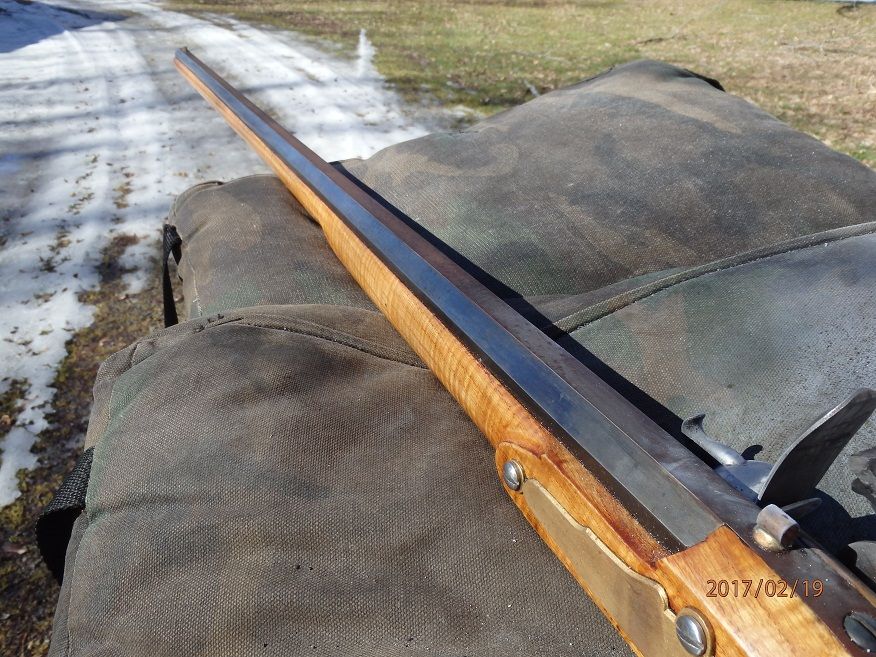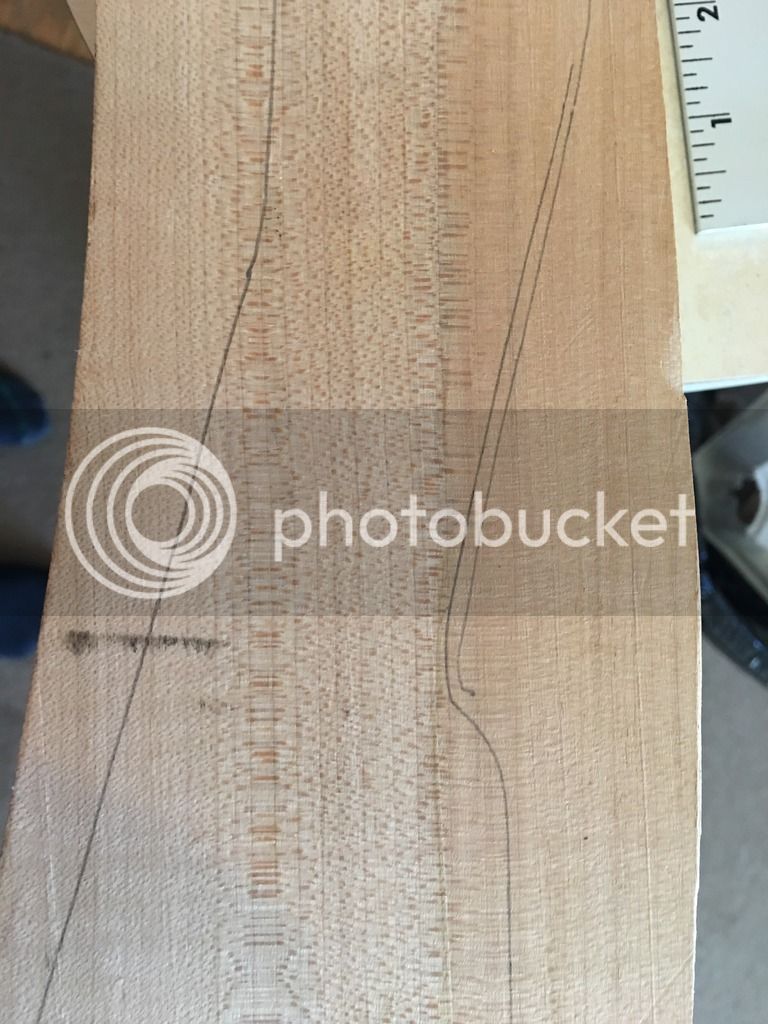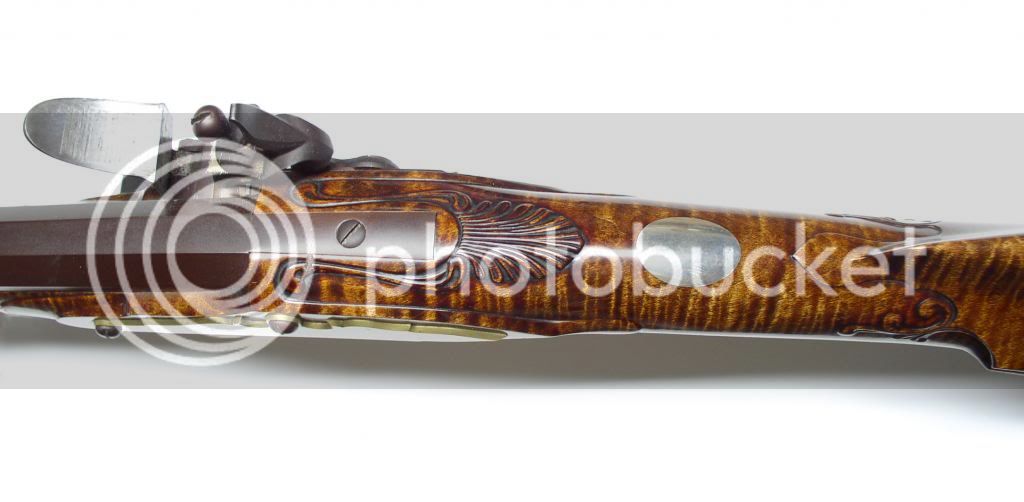I don't know how you plan to cut the barrel channel but if you are going to use a router, be sure to true up the top surface so that it is flat and true up one of the sides so it is straight and perpendicular to the top.
Also, leave the wood on both sides of the barrel channel as wide as possible. This means, do not try to trim the width on either side of the future barrel channel down.
That will give you a a good, wide straight surface to rest the router on and to serve as a guide for the fence so that an accurate, straight channel will be cut.
(This applies for both a straight octagon or a swamped barrel. The initial channel must be straight. With a swamped barrel, the larger swamped areas are then cut into the newly machined straight channel.)
If you are going to use a router, I suggest you use a straight cutting carbide bit that is about the same width as the flats on the barrel.
For a 7/8" octagon that would be about 3/8" in diameter. (The actual barrel flat calculates to be .362" but the slightly larger .375 size will not cause a problem.)
I do not recommend trying to cut the 45° angles with the router.
If you cut the center of the channel width straight down using many passes while increasing the depth of cut a little bit with each pass, when you reach full depth you will have the bottom flat.
Then, reset the fence so that the side of the cutter will be cutting a channel that is closest to the guide side of the stock.
(You will have to do some calculating to determine where this will be but if you are using a 3/8" bit and cutting a groove for a 7/8" barrel, the fence will be set .250 (1/4") closer than it was when you made the center cut. (.250 + .1875 = .4375).
Likewise when you set the fence to do the far side of the channel you would set the fence 1/2" further than it was set to cut the near side.
It's a good idea on cutting the far side to take many measurements on the total width of the slot before making any long cuts. Start out on the narrow side and slowly adjust the fence until the cutter is producing a width you want to end up with.
Now, about the depth of these two cuts. (The near and far side of the channel.)
As before, start with a shallow cut and slowly increase the depth as you make passes down the length of the stock.
The depth of the near and far side cut will be (for a 7/8" barrel) .256 less than the center slot was cut. (1/4" less will do).
When you've finished with these 3 cuts you will have a deep center channel with an area on each side that is 1/4" more shallow than the center cut.
If you use a 3/8" wide chisel you can remove the two ledges that are on either side of the center channel by cutting it on a 45° angle. This will essentially remove all of the wood and leave you with the two angular side flats to finish out the channel.
Before someone asks, yes, I've used this process on two stocks made from blanks and it works very nicely.









